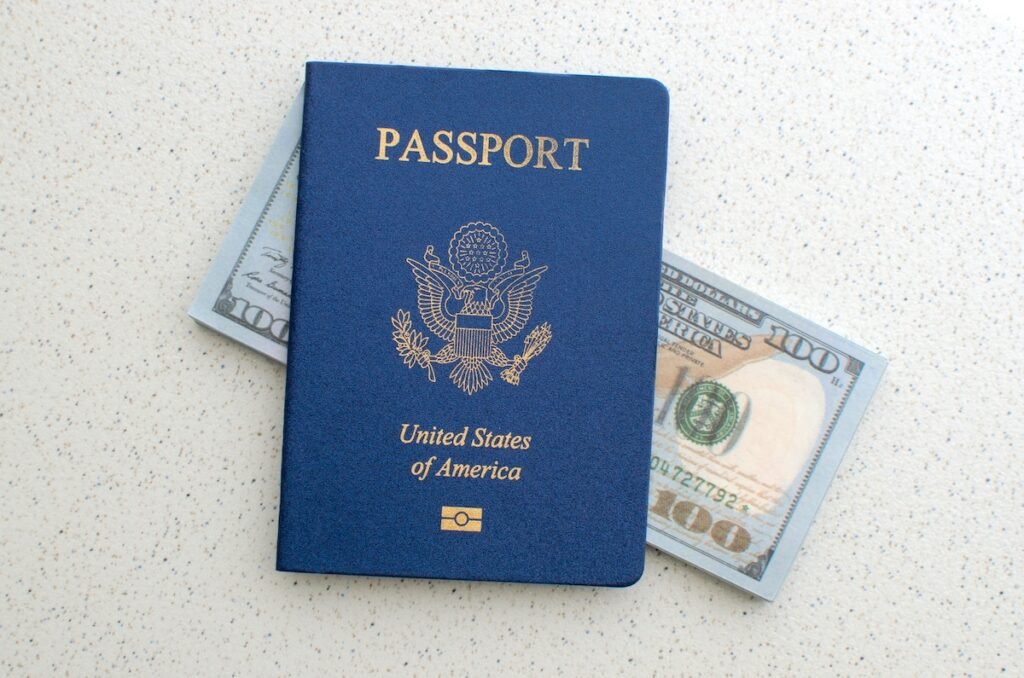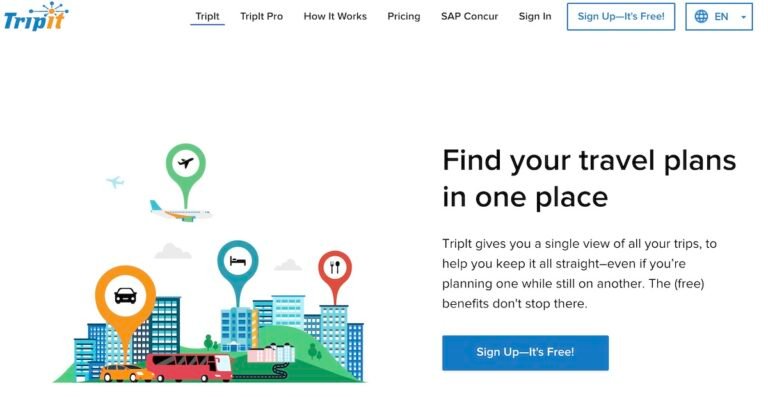Are you tired of investing hours planning your trips to end up with a mix-up itinerary and lots of missed opportunities? What if we have the perfect travel itinerary guide in our pocket, crafted to give you the most rewarding experiences and stress-free travel? You’re not alone in your travel planning struggles.
But what if we told you, there’s a better way? This guide is going to reveal some advanced techniques that can help you create the ultimate travel itinerary according to your needs and desires. Let’s get into it and transform your travel dreams into reality!
Define Your Travel Goals
Identify the purpose of your trip
Before you jump into planning your trip, stop and ask yourself what you want to get out of your travels. Knowing exactly what you want to do will help you construct your travel itinerary. Think about writing down experiences you want to have or sights you want to see.
This will allow you to narrow down your choices and focus on the destinations best suited to your interests. Your purpose of travel can have multiple aspects as you may want adventure and relaxation.
Consider your budget, duration and personal preferences
After you’ve figured out why exactly you want to go on this trip, it’s time to think about the practicalities. Your budget will be very influential on where you’ll go and what you’ll do. Set realistic spending limits and research the cost of the destinations of your choice.
Next, consider how much time you have for your trip. Depending on whether you’re planning a weekend trip or a month-long adventure, the length of your trip will affect how many activities and places you can fit into your travel schedule.
Be sure to consider your own individual preferences. Are you able to stay in 5-star hotels or do you mind cheap hotels/hostels? Are you a foodie who wants to experience local cuisines or do you have special dietary needs? By taking these into consideration, you will ensure a much more enjoyable and tailored trip.

Research the best time to visit
After finalizing a general idea of where you want to go, you need to do your homework on the best time to travel. Research your destination’s climate and ask yourself if you want to go during high season and see attractions at their most vibrant or during the off-season when the crowds are thinner but some activities may not be available.
Look for any special events or festivals that could be going on during your potential travel dates. These can lend an extra dimension to your trip but could also translate to premium prices and busier crowds.
Off-season refers to that time frame when the most popular destinations are empty, whereby travelling during the off-season can save you a few pennies and you can afford your dream journey.
Choose Your Destinations & Activities
Must-see attractions, landmarks and hidden gems
As you decide on your destinations, create a list of must-see attractions and landmarks. These are frequently the iconic sites that shouldn’t be missed. But don’t stop at that.
Find some off-the-beaten-path restaurants that might have some fresh culinary meals and give you a taste of the local flavour. These might be off-the-beaten-path neighbourhoods, small museums or local markets, all places that tourists tend to miss.
Balance sightseeing, relaxation and unique experiences
If you want to cover a lot of ground on your trip, think strategically about how you plan your travel itinerary. Balance out your trip days between different types of activities and relaxation. It’s tempting to fill every day with back-to-back sightseeing, but don’t forget you’re on vacation.
Add in time to relax, whether relaxing on a beach or enjoying a long meal at a local café. Look for unique experiences that tie into what you enjoy. This might be a cooking class, a street art tour or even a day trip to a nearby town.

Prioritize activities based on location and availability
After building your list of destinations and activities, it’s important to prioritize. Consider the geographical location of each place including any potential traffic issues. limited availability or specific opening hours so you aren’t wasting time.
Note that some activities may only have limited availability or specific opening hours so you aren’t wasting time. And be sure to leave space in your calendar for spontaneous discoveries or surprising what-ifs that tend to lead to the best travel experiences.
Your Travel Logistics
Flights
For your travel logistics, first thing first: purchase your flight tickets. Airfare can vary dramatically based on carrier, travel date and how advanced you book, so be on the hunt for the best deals. Think about using flight comparison sites to get the best deal on your flights.
Accommodation
Now that you’ve booked your flights, it’s time to think about accommodation. Whether you’re a fan of hotels, vacation rentals, hostels or other options, booking in advance gets you the best shot at availability and generally better rates. Be sure to read reviews and confirm location information to ensure your lodging is in line with your travel plans.
Local transportation
After that, research and plan local transportation options. Will you depend on public transport, car rental or ride-sharing services? You might need a different strategy for each city destination, so be sure to plan! Buying transit passes or booking car rentals ahead of time will save time and money.
Visa requirements
Before you travel, it’s important to know and comply with the visa requirements of your destinations. Refer to the official government websites or talk to a travel agent to make sure you have all the required documents. Don’t leave this until the last minute as some visa applications take weeks to process.
Travel Insurance
You also need travel insurance as part of your trip planning. It offers reassurance and a safety net in case of unexpected events. Choose a policy that covers medical emergencies, trip cancellations and lost luggage. Travel insurance in the United States offers financial protection for unexpected events while traveling, such as trip cancellations, medical emergencies, lost luggage, or travel delays. Many plans also include coverage for emergency medical evacuation and 24/7 assistance services.
Travel times
Travel times between destinations can be deceiving, so a realistic assessment can really maximize your trip. Use mapping tools to get estimates of driving times or check public transportation arrival schedules. Don’t forget to calculate time for delays, rest stops and any sightseeing during your drive.
Organize Your Travel Itinerary by Day
Day-by-day breakdown of activities
Now that you’ve identified your destinations and worked out some logistics. You’re ready to begin creating your trip, day by day. Let’s start by just writing down all the activities and attractions you want to see.
Next, schedule each for a particular day based on their location, your interest and the time estimation. This makes it easier to visualise your trip and helps you to check off any must-see places.
Essential downtime
Include essential downtime as you plan each day. Plan mealtime breaks to relax and enjoy the local scenery. Be sure to also schedule rest times, particularly following long travel days or vigorous activities.
Above all, make time for the unexpected and build in wiggle room for spontaneous discoveries or unexpected delays. That balance is key to keeping your itinerary fun while still stress-free.
Realistic timeframes for each attraction
Take into consideration how long each activity may take. If you’re going to the museum, landmark or tour, research average visit durations to work out how long you’ll need based on what’s of interest to you.
Include travel time between spots, potential waiting lines and any pre-reserved bookings you may have. By allowing for more realistic time frames, you can prevent your days from being overloaded and falling into the trap of trying to cram too much into a single experience.
Add Essential Details
Reservation confirmations
Make sure nothing goes wrong on your trip by making sure all important details are captured in your travel itinerary. Start by first loading up reservation confirmation details for your flights, places where you are going to stay and any activities you have pre-booked. That’ll put everything at your fingertips when checking in or confirming bookings.
Addresses and emergency contacts
Then, add the addresses for all of your accommodations and planned destinations. This will save you time and avoid headaches when you arrive at unknown destinations. You are also not to forget about emergency contacts such as local embassy information, your travel insurance provider, as well as a trusted contact back home.
Maps, offline guides and important travel documents
Save offline maps and guides to your destination to make your journey even easier. It prevents you from getting stuck or being unable to find information when you are cut off from the internet.
Download digital copies of travel documents such as your passport, visa and insurance policy. Store these safely in a cloud service or an encrypted folder on your device.

Apps and tools to keep your itinerary accessible
With today’s tech-savvy world, it’s easier than ever to keep your itinerary organized and accessible using the right travel app. Including all key pieces of information in your travel itinerary to any place you are going will ensure you’re ready for anything that comes up along your travels!
Your Travel Planning
Efficient itinerary creation tools
Now that you have everything organized and added the key details, it is time to make your travel planning process more efficient. Efficient itinerary creation tools are one of the greatest ways to achieve this. These tools can help you to save time and organise your trip better.
Plenty of itinerary creation tools are available. Some examples are:
- TripIt: Automatically converts your travel itinerary into a master itinerary
- Google Trips: Provides personalized trip planning based on your Google account data
- Roadtrippers: Best for planning road trips and creating optimized routes
- Wanderlog: Enables collaborative trip planning with friends and family
Time-saving booking platforms
Also, if you want to streamline your travel planning even further, think about using time-saving booking platforms. These platforms let you book multiple elements of your trip in one spot, so you don’t have to deal with multiple websites and bookings.
Here are a few efficient booking platforms:
- Expedia: Includes package deals for flights, hotels and rental cars
- Booking.com: Provides a wide range of accommodation options and activities
- Kayak: Compares prices across multiple travel sites for the best deals
- Airbnb: Offers unique accommodations and experiences on one platform
Top App Picks to Kickstart Your Travel Planning
To kick off your streamlined travel planning process, consider starting with these top-rated apps:
- TripAdvisor: Offers reviews, bookings, and trip planning features
- Google Maps: Essential for navigation and exploring your destination
- PackPoint: Helps you create customized packing lists based on your trip details
Tailored Itineraries for Every Traveler
Family-friendly adventures
When planning a family vacation, it’s essential to plan the journey that offers everyone’s interests and needs. Here are some tips to make your family adventures unforgettable:
- Pick destinations that have something to offer for everyone: Educational, cultural and recreational experiences.
- Prepare age-appropriate plans: Whether toddlers to teenagers or adults, make sure everyone in the family has something to enjoy.
- Allow for downtime: Avoid scheduling your days so tightly, make sure the family can rest and recharge to prevent burnout.

Solo traveller experiences
If you are heading out solo, your itinerary should be all about personal growth and discovery. Consider these ideas:
- Take part in local culture: Attend cooking classes, language exchanges or cultural workshops.
- Keep Safety a Priority: Research safe neighbourhoods and transportation options in advance.
- Be flexible: Allow time in your itinerary for spontaneous adventures and new friends.
Romantic getaways
Couples seeking a romantic getaway should emphasize shared intimate experiences and memory-making. Here’s what to do:
- Balance activity and downtime: Combine your most thrilling experiences with low-key time spent together.
- Look for scenic spots: Pick places that offer natural beauty or something of a romantic element.
- Plan surprise elements: Treat people to the unexpected and keep the excitement alive.

Group travel coordination
Organizing a trip for a group requires careful planning and consideration of everyone’s preferences. Here are some tips to develop a good group travel experience:
- Caring is sharing is caring: Split up the planning burden.
- Build in free time: Provide opportunities for exploration either independently or in smaller groups.
- Choose accommodations wisely: Try to find accommodations that are large enough to fit your whole group and include some shared areas for hanging out.
Conclusion
With this guide, you’ll have the necessary knowledge to plan your journey where you’ll get to maximize your experience but don`t have to do it in a stressful way. Keep in mind, that the whole point of planning your travel itinerary is to make your adventure easier, not to box you in.
So your well-baked itinerary in hand will allow you to explore the unexpected and spontaneous adventures. Your well-planned journey is the canvas and your experiences are the strokes that form the masterpiece. So go ahead, put on your self-confidence and make memories that will last forever.











